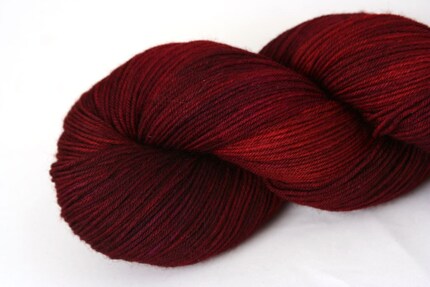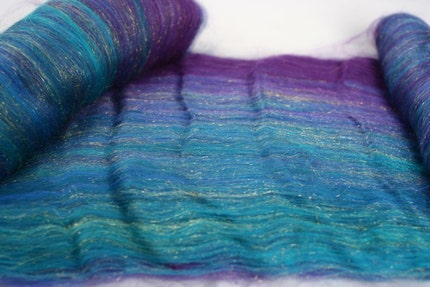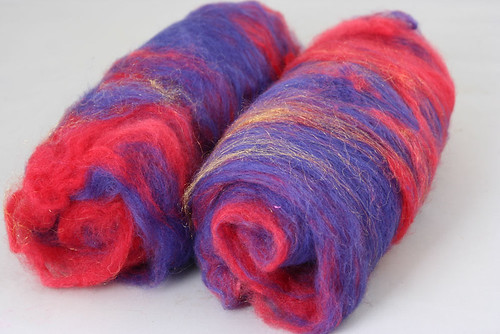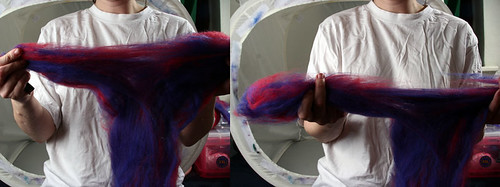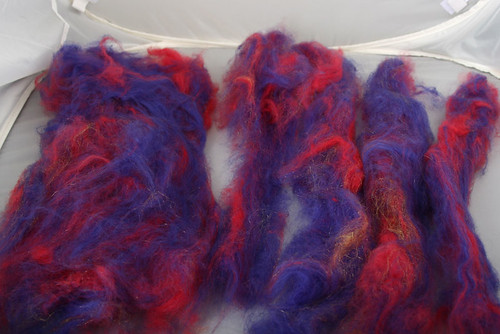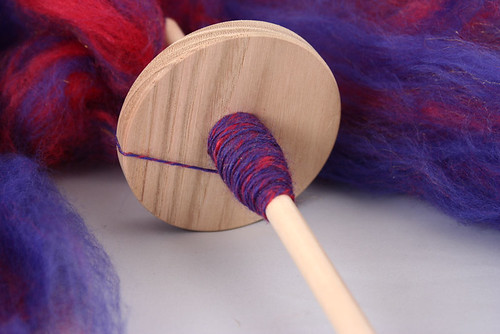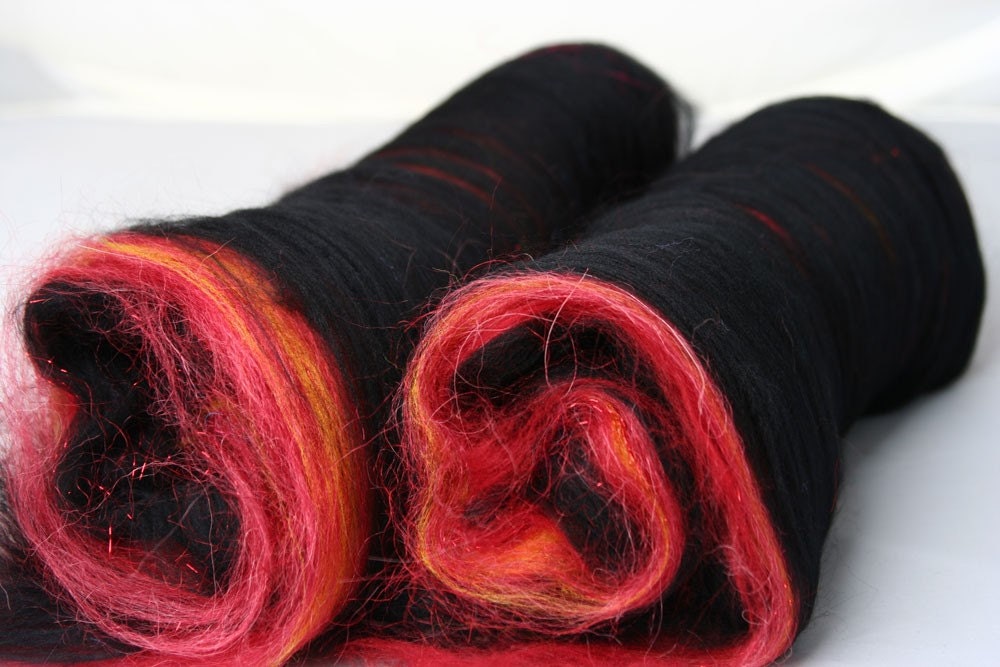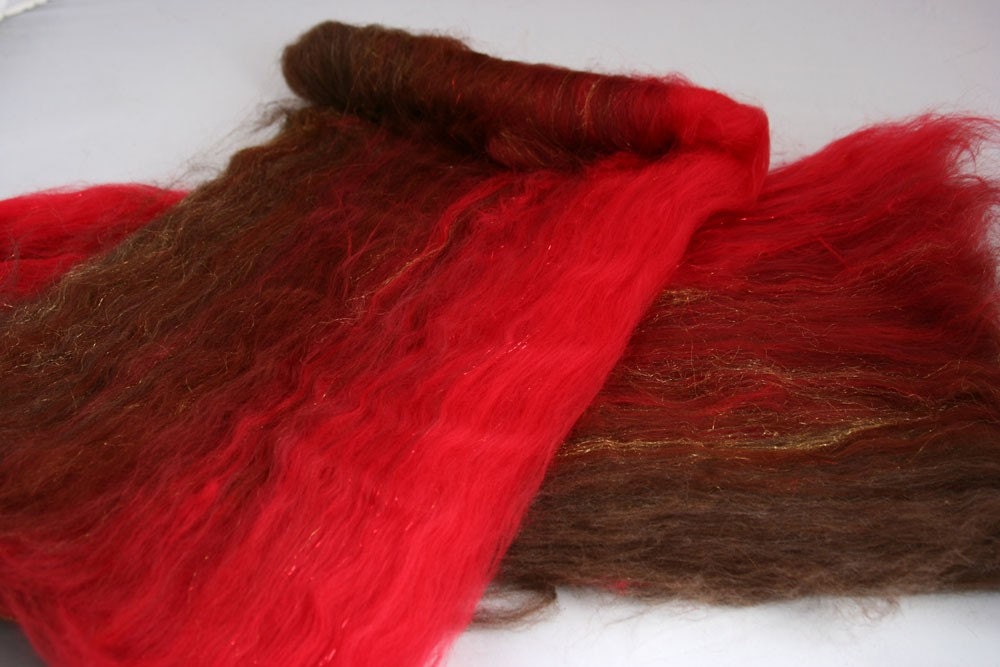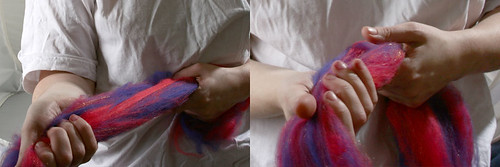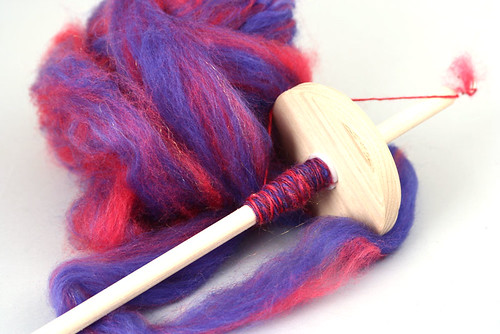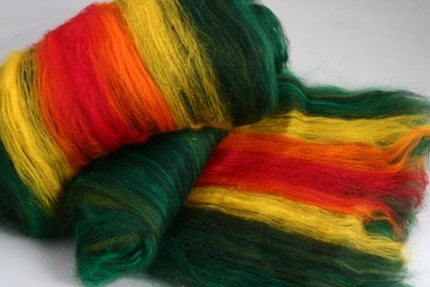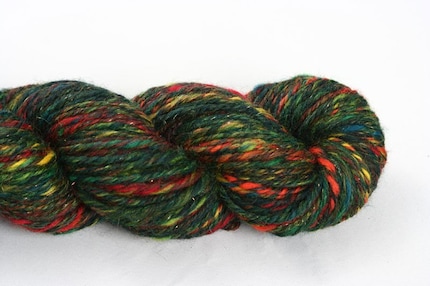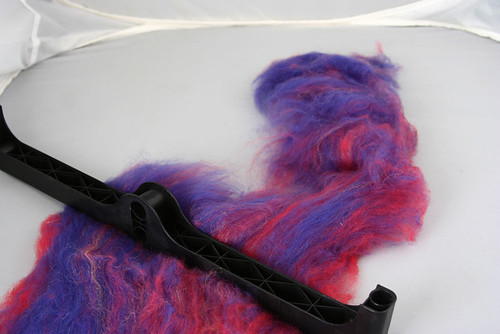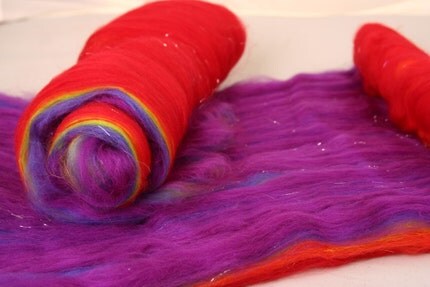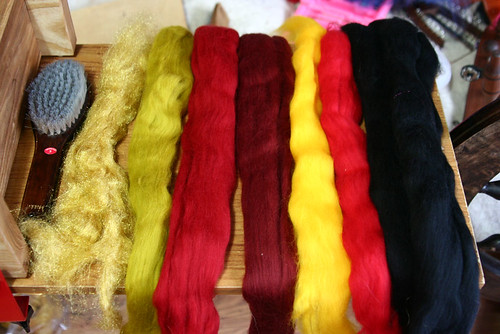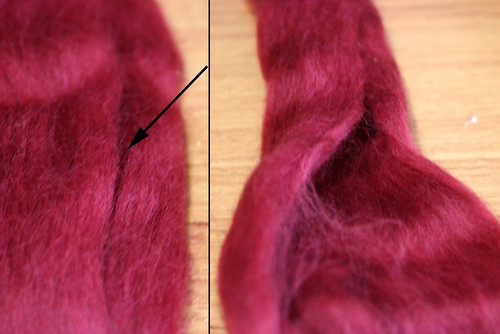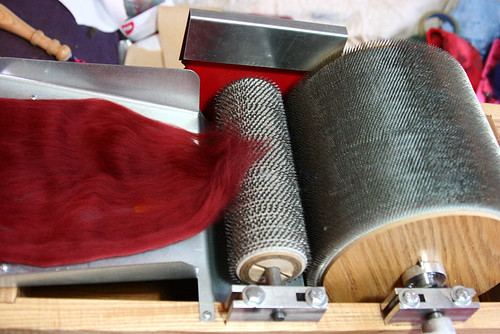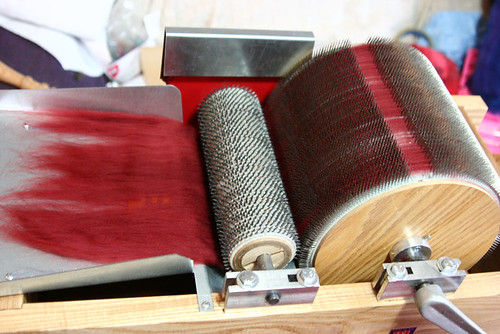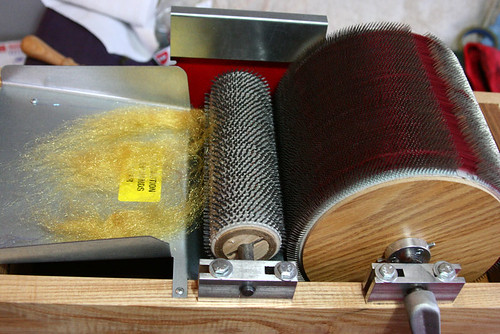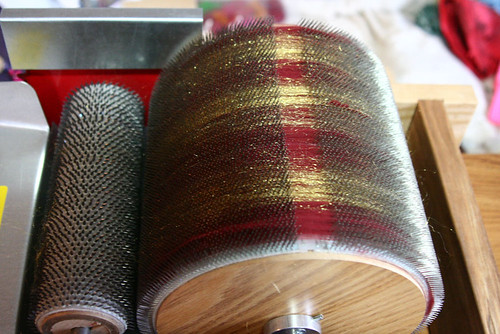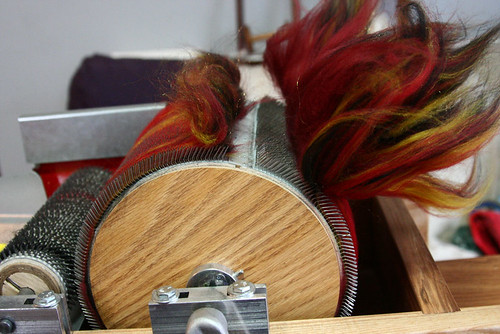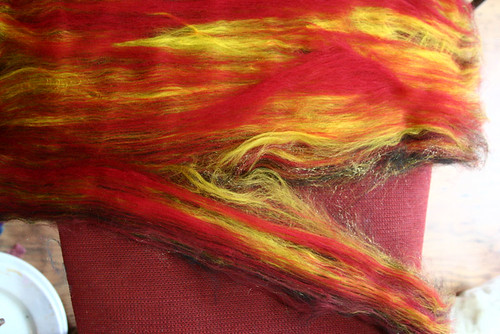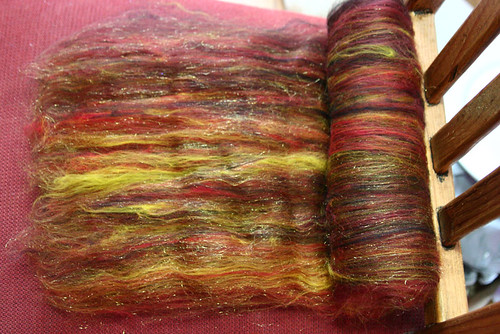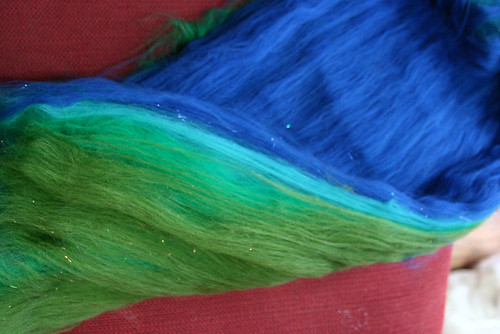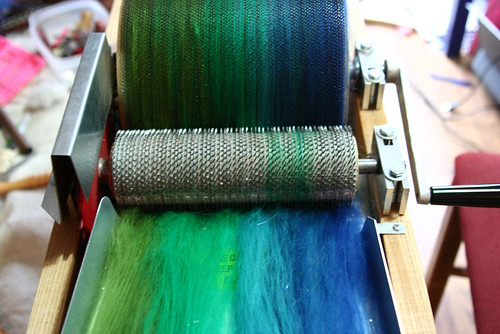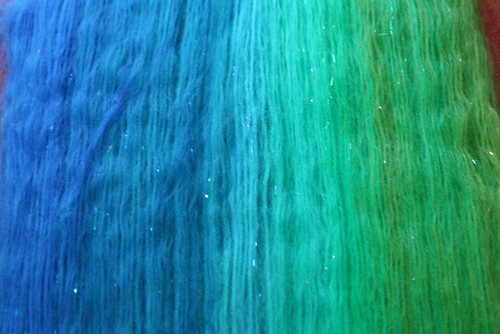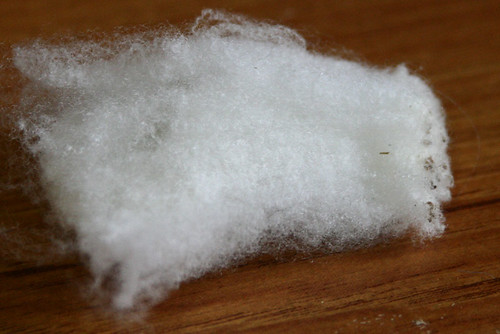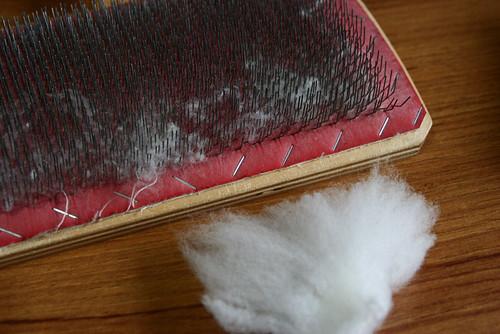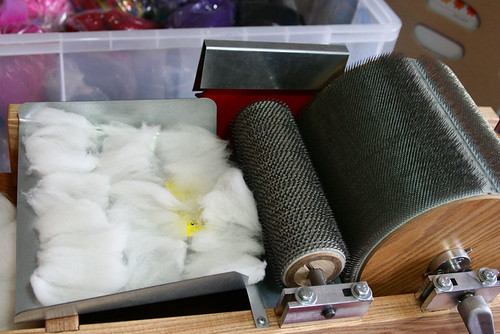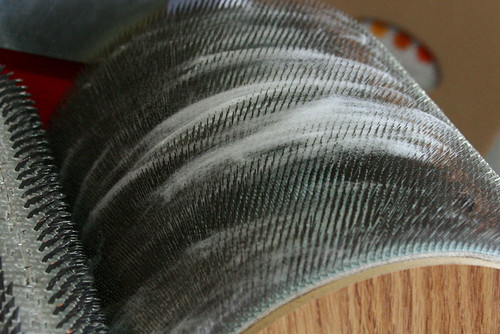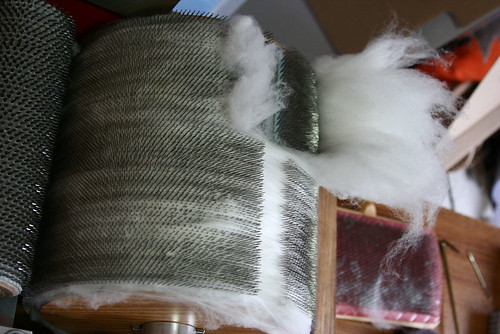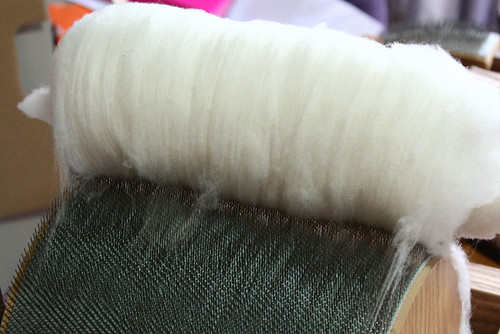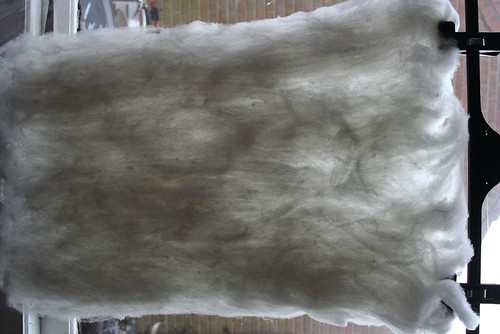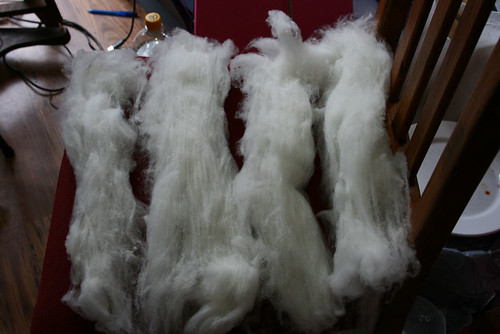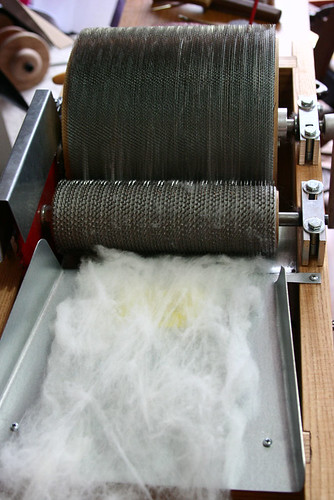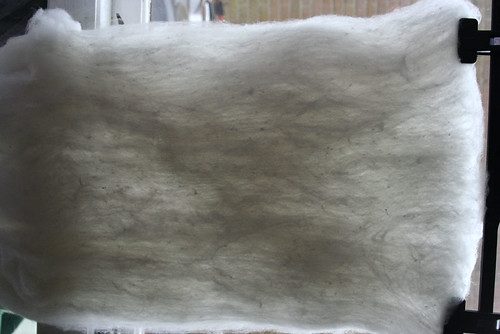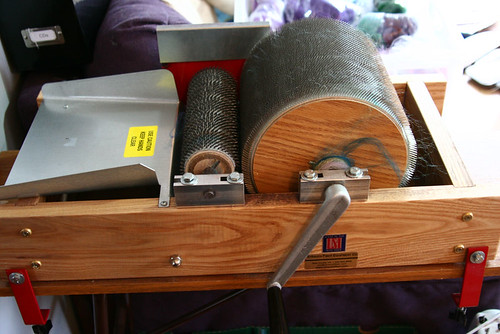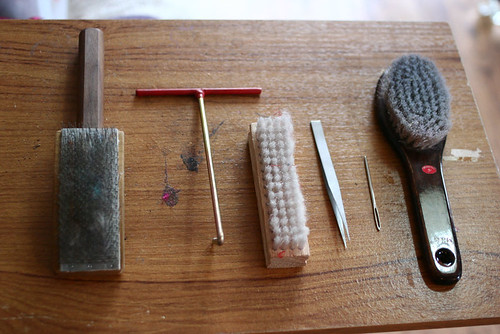Okay, so yeah, i’m a bad blogger. First things first, i didn’t forget about the competition, i just did the rng and contacted the winners via Rav, but for those of you who didn’t see the thread, the lucky winners were gashknits and koshka. I hope you liked the fibre and yarn!
And now, a quick round up of the several months i’ve been missing. Firstly Karma became mummycat! I’d been putting off getting her spayed because the cat i lost the summer before had had a bad reaction to some anaesthetic (not what killed her), and i was panicking the same thing would happen to karma, so i was stalling. I’d fully intended to do it, and the week i was going to call the vets and arrange it, i noticed she was getting a bit chubby. A quick check of the internet for pregnancy symptoms comfirmed it, and a few weeks later she was huuuuuge, and not long after, on May 8th 2009, out came 5 tiny kittens. One was very small, and only lasted a couple of days…i tried to make her love it, but she kept pushing it away from her.
The other 4 were super cute and healthy though…one i kept, two went to live with mum and dad, and another went to live with a friend, which made me feel a bit less guilty about bringing more kitties into the world, as they hadn’t taken space that could have been had by a shelter kitty. Now mum and babies have all been neutered, so there’ll be no more accidents, which is almost a shame, as they were so fun to have around. The baby I kept is named turtle, and she’s getting big now…here’s a pic of her fighting with her mum.
Then most of the summer i was ill, went to the doctor a lot and got a referral back to the CFS clinic, but as ever they couldn’t find anything wrong, though my B12 levels were on the low side, so i started taking suppliments, and slowly started feeling better, though i’m not sure if the two things were related.
Recently there’s been lots of house-related things going on. The old boiler finally gave up, so i got a new one installed, along with new gutters. Next weekend I’m getting double glazing put in, and I’ve been picking out the bits for a new kitchen…so soon I’ll have a nice warm and pretty house!
Of course, this update wouldn’t be complete without fibre-related content! I’ve not been feeling up to doing much dyeing, but I’ve done a lot of knitting, and got a knitting machine! A passap duo 80, with a motor! So even when i’m not feeling great, I can still use it without tiring myself out. AND i can make a pair of socks on it in an afternoon! There is so much more for me to learn on it, but i’ve made a few pairs of socks, and each time i’m making fewer mistakes, so i’m loving it.
On Sunday, I got some new friends! When i look out my bedroom window, this is what i can see.

They were my dad’s Christmas present from mum last year, but he had to part with them as they are trying to sell their house, and the chickens had been pecking at the wooden windowframes and had trashed the garden, and couldn’t live in the big grassy part of the garden as planned cos next-doors dog kept escaping and attacking them. So they came to live with me.
There is Karma chicken (the same colour as mummycat!) who is a blue cochin chosen by me, then the one at the front is Silver, a silver sussex, the little one on the left is Buffy, a buff orpington bantam, and the one in the house is Polly, a welsummer. There is another one, a black rock called Rocky, but she isn’t here yet as she evaded capture. This morning polly woke me up clucking to herself. I looked out the window and couldn’t see any cats bothering them, so went down to check the food wasn’t clogged up in the feeder…I could see no reason for the noise, so i am assuming she was just showing off that she’d made me an egg…..the first since they’ve been here! She could well have been trying to tell me that she wants to be running around free, but that’s not allowed until they’ve had a few more days to settle in and i’m sure they know where their bed is and aren’t going to run away or try and roost in the trees.
And finally, after almost a year, paul built me my veggie beds!
Not so exciting yet, but soon they’ll have things growing in them! This year I’m just planning on potatoes and peas, and maybe some french beans if Nik has any spare. The beds aren’t where i’d originally planned them, so i’ll have to check that they get enough light along the hedgerow, and maybe move them next year. Hopefully by then the whole garden would have been rotovated and reseeded, so will be flat and have nice grass with no weeds.
So that’s me up to date. I’ll try and not leave it so long next time!





